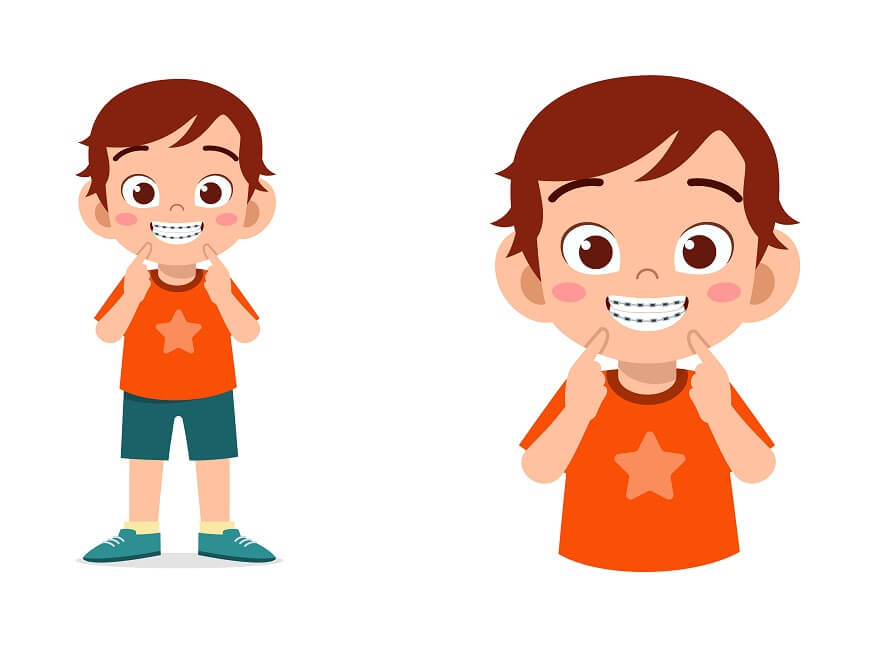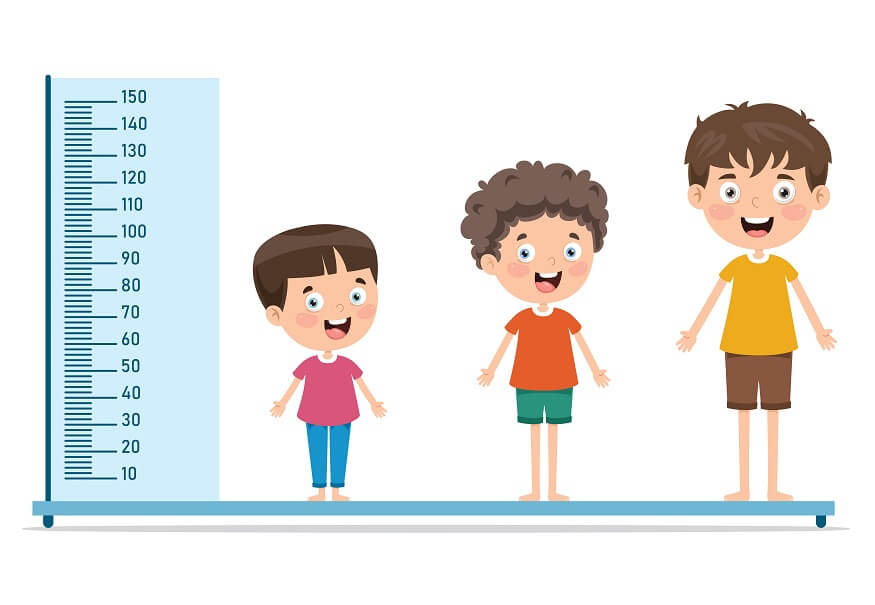As a parent, you have likely got a great deal to juggle, and assisting your child to take good care of their dental health while wearing braces may seem like an additional onerous task to tackle in your already busy schedule. Fear not, for here is a comprehensive guide to help, chock-full of helpful advice and suggestions to ensure your kid’s pearly whites stay in top-notch condition while they undergo orthodontic treatment.
Also Read: Respiratory Rate in Children by ages: What is normal, How to stabilise Respiratory Rate
Understanding the Basics of Braces
Orthodontists often advise the use of braces to solve manifold dental dilemmas such as overcrowding, uneven teeth, or bite troubles in youngsters. These operate by apportioning perpetual stress over time to bit-by-bit shift the teeth into symmetry.
Kinds of Braces:
Types of Braces:
Traditional Metal Braces: These are the most general and make use of metal brackets and wires to mend tooth alignment.
Ceramic Braces: Similar to metal braces, but they are coloured to blend with the teeth, making them less noticeable.
Lingual Braces: These braces are fixed on the inside of the teeth, hence are virtually invisible.
Invisalign (Clear Aligners): These are removable braces made from clear plastic.
Also Read: Personal Grooming for Kids: Importance, Tips, Benefits
The Importance of Dental Hygiene with Braces
Adequate oral hygiene assumes a more substantial significance when your child is donning orthodontics. This is because of the added crannies and crevices that braces generate, which can become sanctuaries for food particles and tartar. If abandoned, these perpetrators can provoke dental problems such as cavities, periodontal illness, and blemishing. Here’s why proper dental hygiene is so pivotal while wearing braces:
Prevention of Cavities: The trapping of food in brackets or wires of braces has the potential to result in the formation of plaque, a slimy, transparent bacteria buildup. Prolonged exposure to plaque can erode the enamel of one’s teeth, leading to the development of cavities. Consequently, regular and methodical brushing and flossing are critical in order to dislodge food and eliminate plaque, ultimately preventing deterioration of the teeth.
Avoiding Gum Disease: In the event that plaque isn’t eliminated properly, it can solidify into tartar, leading to a form of gum illness termed gingivitis. This can cause the gums to become inflamed and swollen and start to bleed easily. In serious cases, it could even lead to the gums receding from the teeth, resulting in more dental complications. Consistent dental treatment aids in taking away plaque and avoiding gum disease.
Preventing Tooth Staining:Having braces on can provoke discolouration or staining around the place where the bracket is fastened to the tooth. This is typically caused by absent brushing, resulting in the proliferation of plaque. Insuring appropriate dental hygiene kerbs this buildup and, as a result, reduces the probability of staining.
Maintaining the Effectiveness of Braces: Inadequate dental care may result in the formation of cavities, gum problems, and other dental woes that could disrupt the plan of treatment for orthodontics. Maintaining proper oral hygiene is essential to guaranteeing that braces function satisfactorily and that your child’s orthodontic therapy stays on schedule.
As parents, it is essential to support and monitor your kid’s dental health regimen while they have braces. This means making sure they brush and floss routinely and properly, use fluoride rinse, and keep away from foods that are detrimental to their braces. Regular appointments with the dentist and orthodontist are also essential to ensure any looming issues are caught quickly, and professional scrubbings can assist in eliminating any rampant plaque or tartar.
Also Read: Is Tooth Fairy Real? How to talk to kids about tooth fairy
Tooth Brushing: An Essential Routine
The Right Technique: Instruct your child to incline their toothbrush at a 45-degree angle in order to clean near the wires and brackets of the braces. Stimulate them to brush each tooth from the top and bottom to ensure all plaque has been eliminated.
The Right Equipment: Electric toothbrushes are significantly more efficient in eliminating debris around braces due to their remarkable plaque-removing capabilities. Moreover, orthodontic toothbrushes with V-shaped bristles can be advantageous for cleaning around wires and brackets.
Flossing: A Non-Negotiable Habit
Flossing with braces can be somewhat laborious, but it is crucial for reaching areas beyond the reach of toothbrushes. Floss threaders, or orthodontic flossers specifically designed for braces, are invaluable tools.
The Role of Mouthwash
Fluoride mouthwash can be beneficial in combating cavities and promoting healthy gums. Incorporate it into your oral hygiene routine by using it every evening after brushing and flossing.
Regular Dental Check-ups
Orthodontic sessions aren’t substitutes for regular dental checkups. Frequent dental visits enable the early detection of prospective dilemmas as well as the delivery of an in-depth cleaning to eliminate tartar buildup.
Managing a Brace-Friendly Diet
Some foods can harm braces or induce cavities. Push for a brace-friendly diet by restricting sugary and starchy foods and beverages. Moreover, to avoid damage to the wires and brackets, ensure to avoid tough and sticky food items.
Dealing with Discomfort and Emergencies
It is normal for your child to feel some irritation or even minor pain after braces are adjusted. You can manage such symptoms by administering soft foods, over-the-counter analgesics, and orthodontic wax. In case of an orthodontic emergency, such as a damaged wire or loose bracket, instantly reach out to your orthodontist.
Encouraging and Educating Your Child
Children may need additional stimulation and comprehension about the importance of braces and good dental hygiene. Clarify how braces will work to their advantage and the need to maintain cleanliness. Transform brushing and flossing into a game or a competition to sustain their involvement.
Remember, the trek to obtaining a wondrous smile by means of braces may be troublesome, yet it is well worth the exertion. Alongside suitable direction and supervision, your kid’s dental health can continue to saturate and expand while wearing braces, laying the basis for an eternity of flourishing grins.
Also Read: What is Dental care: Importance, Causes, Remedies
Note for children
Little ones who have braces should pay additional attention to their oral hygiene. Consistently brush and clean your teeth weekly. Abstain from ingesting edibles that can become ensnared in braces, such as taffy or popcorn. If difficult or even tough foods, like some fruit or almonds, need to be consumed, chop them into minute bits or munch them with your back teeth. Indicate to your dentist or orthodontist if uneasiness of the teeth, gums, or mouth arises. Also, mind any jaw discomfort or dissonant noises produced by your braces and inform your doctor if these anomalies take place.
Be braced for teasing. It’s possible that some children will make fun of your braces. Remember, though, that braces are only temporary and won’t have any lasting effect on your look. Don’t be intimidated by the challenge. If maintaining your oral health with braces has become a chore, solicit the help of your parents or a dental professional. Wearing braces is a sign of taking care of your teeth and that you are committing to making sure your smile is as bright as ever.
EuroSchool promotes the notion that parental engagement is indispensable for ensuring sound oral cleanliness. We urge moms and dads to converse with their kids regarding dental wellbeing and to help them brush and floss their teeth appropriately at home.










